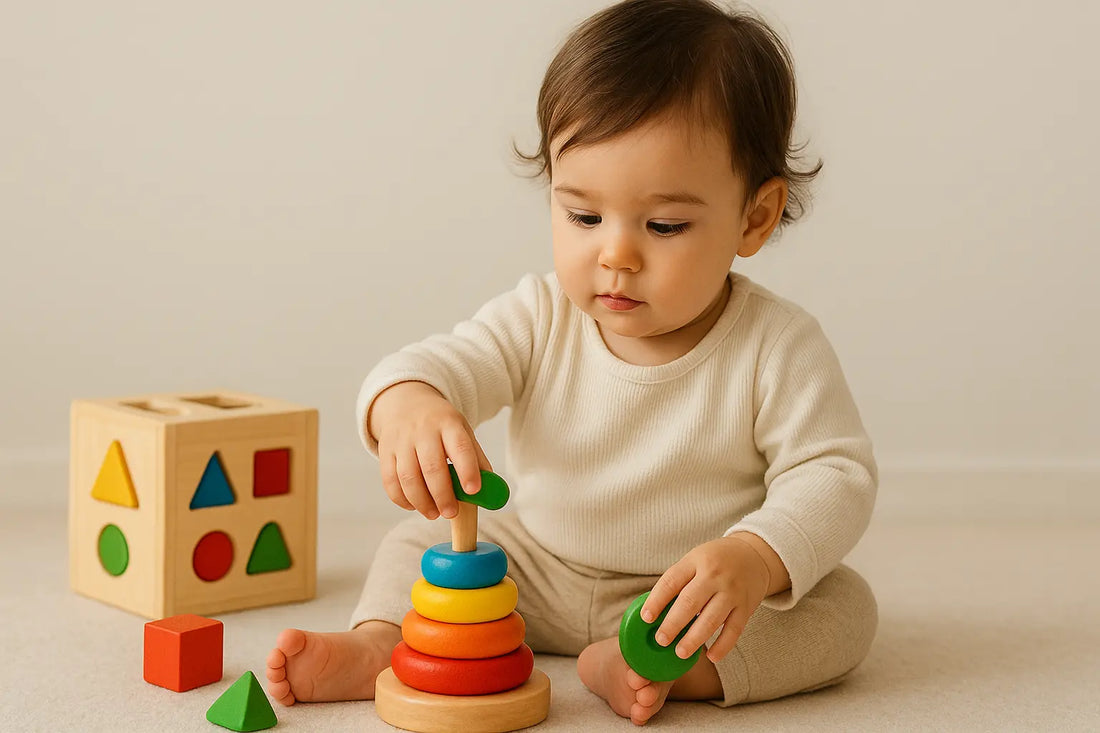
The Problem with Screens for Little Ones | Screen-Free Play Tips
Share
The Problem with Screens for Little Ones
Parenting today often comes with a tough choice: keeping your child entertained with a screen or finding healthier alternatives. While tablets, smartphones, and TVs may seem convenient, research shows that excessive screen time in toddlers and preschoolers can negatively impact their development. Instead of nurturing creativity and curiosity, screens can interfere with attention span, sleep patterns, and sensory growth.
Let’s explore why screen-free play is vital for your little one’s early years.
1. Attention Span Issues
Screens are fast-paced, filled with flashing lights and endless stimulation. While this can hold a toddler’s focus temporarily, it trains the brain to crave constant instant gratification. Over time, children may struggle to concentrate on slower, real-world activities like reading, building, or imaginative play.
Better Alternative:
Introduce engaging toys like 3D A2Z Alphabet Flashcards or Número – The Counting Caterpillar. These toys encourage patience, problem-solving, and deeper focus without overstimulation.
2. Sleep Disruption
Screens—especially before bedtime—emit blue light, which interferes with melatonin production, the hormone responsible for sleep. A toddler exposed to screens in the evening may become restless, overstimulated, or have trouble falling asleep.
Better Alternative:
Choose calming, screen-free activities before bedtime. Toys like Starry Night Adventure Kit or a simple storytelling session with plush toys can soothe your child and prepare them for restful sleep.
3. Limited Sensory Input
Real-world learning is multi-sensory—touching, feeling, moving, and exploring. Screens, however, limit children to mostly visual and auditory stimulation, leaving out tactile, fine motor, and sensory development opportunities.
Better Alternative:
Screen-free sensory toys like the Touch & Feel Sensory Activity Kit or Rainbow Popsicle Colour Matching Game provide hands-on experiences that stimulate multiple senses and strengthen motor skills.
Conclusion
While screens may seem like an easy option, their long-term impact on attention, sleep, and sensory growth can’t be ignored. The good news is that screen-free educational toys offer healthier, more engaging alternatives for playtime. By making small changes—like introducing flashcards, sensory kits, and imaginative play—you’re not only supporting your child’s development but also creating bonding opportunities that screens can never replace.
✨ Explore our collection of screen-free educational toys and give your child the gift of learning, creativity, and play—without the screen.
FAQs
Q1: How much screen time is safe for toddlers?
Experts recommend no more than 1 hour per day for children aged 2–5 years, and ideally none for under 18 months (except video calls).
Q2: What are the best screen-free toys for toddlers?
Flashcards, sensory kits, puzzles, and pretend-play toys are excellent options.
Q3: How do I reduce my child’s screen time?
Start small—replace one screen session a day with an engaging, hands-on toy or parent-led play activity.
